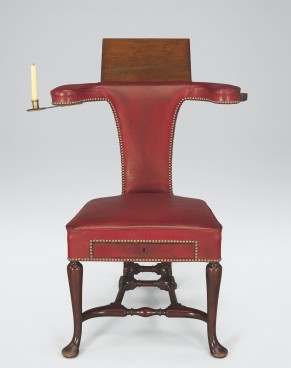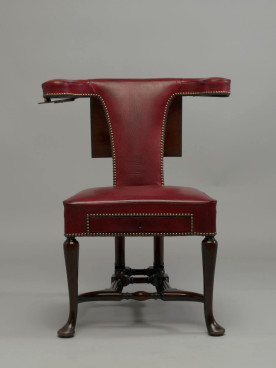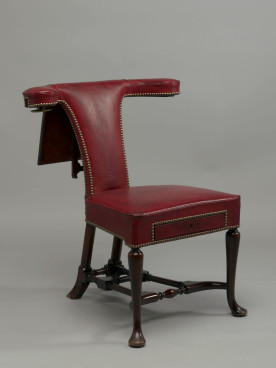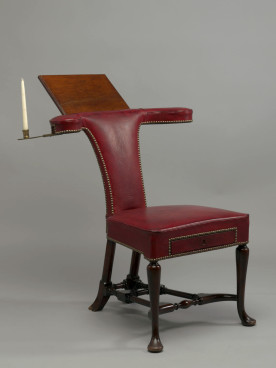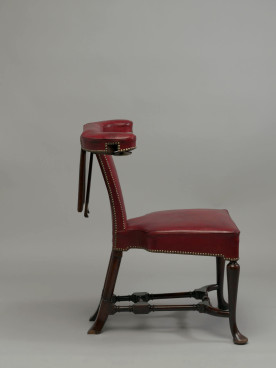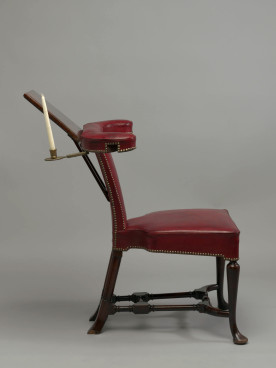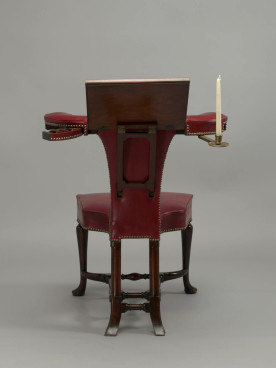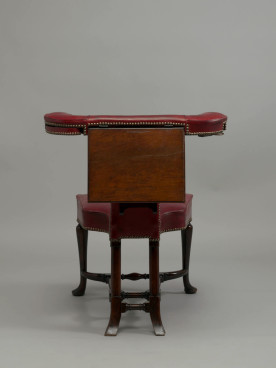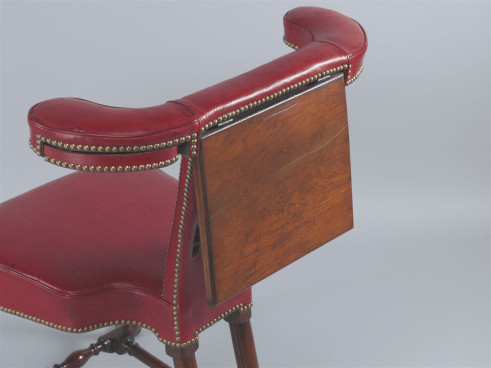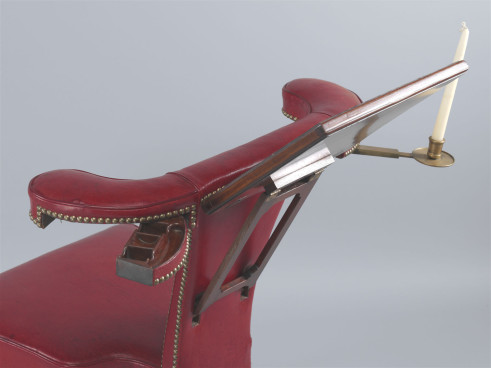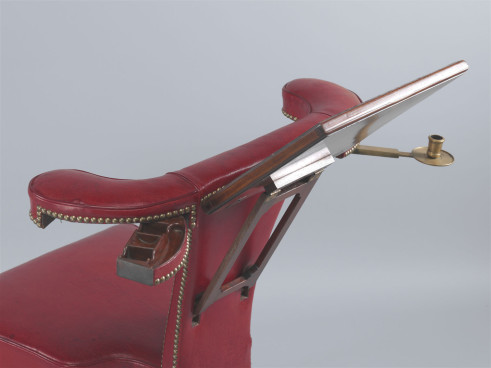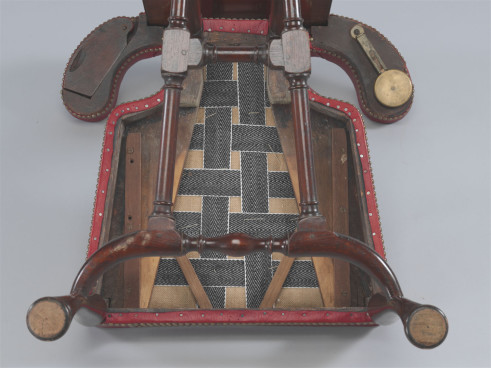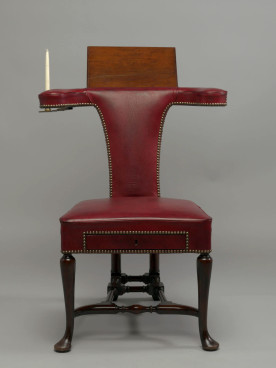Reading/writing chair, c.1725–40
Crabwood, now with late 20th-century leather
This chair has an adjustable reading/writing slope attached to the back. The arms are fitted with a swivelling pen drawer to one side and a brass candle holder to the other.
Adam Bowett Catalogue (19/08/2012)
Description
A writing chair, c.1725-40. It has a narrow back with a curved, flat crest rail and trapezoid seat, all upholstered in modern close-nailed red leather. The crest rail is fitted with a small drawer to the right side for ink &c., and swinging a brass candle arm to the left; the centre of the rail has a hinged writing slope with ratchet support. The seat is sharply indented at the back to accommodate the sitter’s legs and has a drawer in the front. It is raised on turned forelegs with pad feet joined to the back legs by a curved, paired stretcher.
Dimensions
H: 35 “ (89 cm) Seat height: 19 ½ “ (50cm) W: 23 ½ “ (60cm) D: 27 “ (69cm)
Materials
Crabwood (Carapa guianensis Aubl.), oak, beech
Dating criteria
The design of the front leg and the stretcher configuration is particularly distinctive. The curved stretcher occurs on a documented set of chairs at Houghton Hall of about 1725-30. There is a similar chair in the V&A collection W.13:1, 2-1970.
Construction
Construction of the back and much of the seat is conjectural because enclosed by upholstery. The seat rails are beech, tenoned in the forelegs and back legs. Where the rails are sharply indented towards the back of the chair there is probably some form of chamfered or mitred joint between the straight and curved sections of the side rails. The back legs are reinforced with substantial beech (?) blocks where they meet the rails.
The fitting of a drawer has necessitated modifications to the usual method of making seat frames. At each side is a beech board fitted inside the side rails to which the drawer guides are screwed; the boards probably also provide
support to the rails, much needed because of the weakness caused by the indented rails. The drawer is of conventional dovetail construction, but the drawer sides are lipped on their upper edge to engage with guides in the chair frame.
The stretcher is made in four parts, the curved front section is tenoned into the fore legs; the two tapering side stretchers are tenoned fore and aft into the front stretcher and rear legs respectively, and the short medial stretcher is tenoned into the side stretchers. The rear stretcher is tenoned into the rear legs and all joints are secured by single pegs.
The reading slope is hinged to the back of the chair. The support for the slope is hinged to a batten and engages with three angled steps in the back of the chair. The swing out writing drawer and candle arm pivot on large screws.
Marks or stamps
Inside of the drawer bears an oval plaque reading ‘A. STAIR & Co., 59 East 57 St., New York, Guaranteed genuine’.
Condition
Legs and stretchers essentially sound; there is recent chip to the left rear foot. Much of the upper part of the chair appears to have been reconstructed; the front rail and the assembly for supporting the drawer appears to be relatively modern. The writing slope is original, as is the pen drawer, but the candle arm might be modern. The majority of screws used throughout are modern and the drawer lock is a 19th century one.
Additional remarks
These writing chairs are sometimes called cockfighting chairs, supposedly because they have been depicted in old images of cockfighting. However, there is no doubt that their main function was as a writing/reading chair, in which the sitter reversed himself to straddle the seat and rest his arms on the crest rail. Several variants are known, the seats variously trapezoid or oval, and all have the same narrow back and curved crest rail with fittings, indented seat and sharply narrowed stretchers.
The most unusual feature of this chair is its timber. Crabwood is indigenous to Central and South America and parts of the West Indies. It is only occasionally found in British furniture, and was perhaps imported in parcels of mahogany, and mistaken as such.
References
Art Treasures Exhibition, Park Bernet Galleries, New York, 16-30 June 1955.
For crabwood see Adam Bowett, Woods in British Furniture-Making, 1400-1900, Wetherby (2012), p. 67.
Provenance
Purchased Ronal Phillips, April 2003

